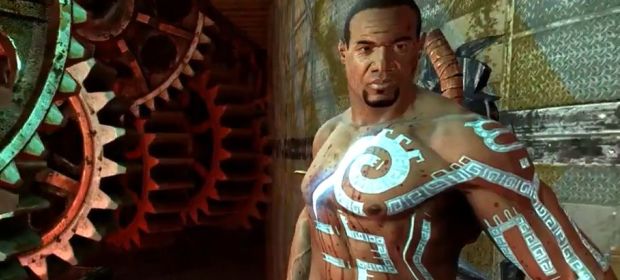We’ve all seen movies where the main character is rendered nigh-unkillable by a combination of uncanny luck, impeccable timing and top-billing. Over the years, we’ve seen heroes survive all sorts of life-threatening experiences, from explosions and drowning to gunshots to the head… So you can kind of forgive Marlow Briggs’ murderers for eschewing bullet-based skull-ventilation for the more thorough and direct route of smashing a three-foot scythe blade directly through his ribcage.
It would have worked too, if not for the fact that said scythe has spent a few hundred years doubling as a summer home for the vengeful spirit of an ancient tribal deity, who subsequently resurrects Marlow, imbues him with a sexy glowing tattoo filled with some kind of ju-ju and unleashes him to track down his killers, avenge his death and save his archaeologist girlfriend from the clutches of an evil megalomaniac who’s searching for a powerful architect that will make him a god.
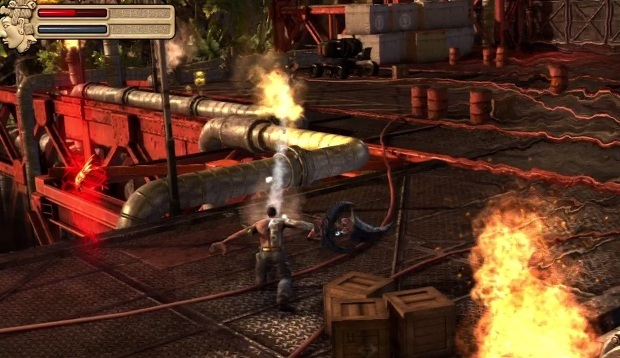
In all fairness to Marlow Briggs, the storyline is paper-thin and about as original as black paint. This is a theme that runs directly through the loud, silly and excessively explodey campaign, too: nothing in Marlow Briggs and the Mask of Death is new ground; not a single moment is possessed of anything you haven’t seen elsewhere at least six times. And yet, it manages to at least put everything it borrows (and it borrows everything) to good use.
At its core, it’s a hack and slash action game that apes Vigil’s Darksiders 2 in every way bar Death’s skeletal horse. A decomposing mount is the only thing Marlow doesn’t get his oversized mitts on during the story, beginning with a scythe as his primary weapon (which later splits in two and becomes claws), and unlocking several devastating area-of-effect spells and even a pair of ghostly wings to help him glide across chasms. Movement is a mix of running, double-jumping and ledge-shimmying, and you’ll mostly be using such techniques to transport Marlow from one fight scene to the next.
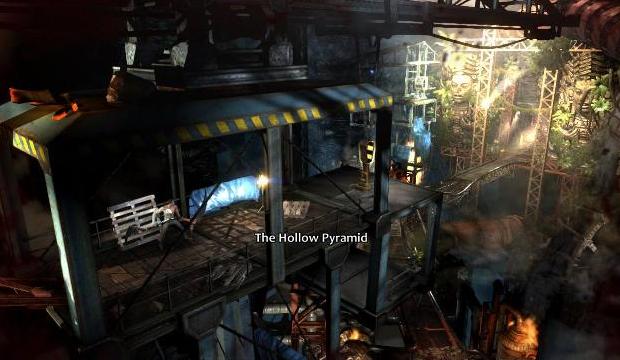 When you get there, you mix X and Y to perform combos, occasionally hit the trigger to launch spirit blades and generally hammer the crap out of your control pad until everything stops moving. Then you pick up your health and mana refills and toddle on – simple. Enemies will either run directly at you, apparently eager for a good solid pasting, or hang back for no apparent reason for a few seconds first. Sometimes, they’ll happily launch rocket-propelled grenades at Marlow’s manly chest, apparently uncaring of their comrades who are clustered around you like you’re the only warm spot on a glacier. The AI is shockingly basic, but if Zootfly were really just aiming to give you lots of stuff to hit in the face, then it’s actually over-efficient.
When you get there, you mix X and Y to perform combos, occasionally hit the trigger to launch spirit blades and generally hammer the crap out of your control pad until everything stops moving. Then you pick up your health and mana refills and toddle on – simple. Enemies will either run directly at you, apparently eager for a good solid pasting, or hang back for no apparent reason for a few seconds first. Sometimes, they’ll happily launch rocket-propelled grenades at Marlow’s manly chest, apparently uncaring of their comrades who are clustered around you like you’re the only warm spot on a glacier. The AI is shockingly basic, but if Zootfly were really just aiming to give you lots of stuff to hit in the face, then it’s actually over-efficient.
There really isn’t much more to Marlow Briggs and the Mask of Death than that. There are scattered collectibles hidden away in secret areas, large-scale environmental puzzles to solve, and lots and lots of identikit goons to punch, burn, throw and hurl mystical spirit daggers into. Enemies become progressively tougher, and the standard scythe-fodder are interspersed with flame-throwing specialists, “professional” mercenaries and otherworldly monsters. It’s mostly completely uninspiring, but somehow manages to be a more-than-decent romp at the same time. Occasionally the action will morph into an on-rails shooter or top-down blaster as Marlow pilots helicopters or shoots down scores of the damn things. You’ll often find yourself sliding down waterfalls and cliff-faces, dodging from side to side as obstacles come at you at breakneck speed. Interestingly, these moments often present in-game challenges that award you with extra experience points for upgrading your skills, and are playable from the main menu as standalone asides.
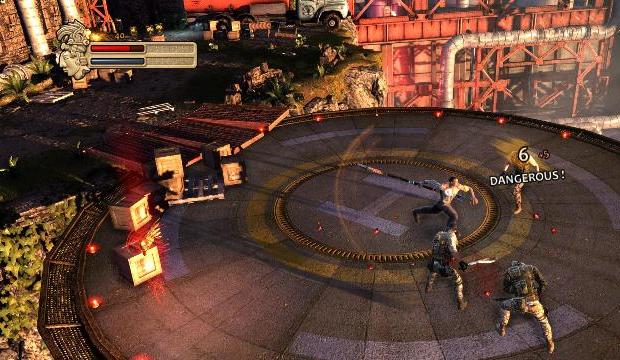
Marlow himself is a likeable protagonist. He may be almost entirely one-dimensional and communicate in a dialect composed exclusively of wise-cracks and thinly-veiled threats, but there has been no attempt on developer Zootfly’s behalf to in any way humanise him or tone him down. He’s a man-mountain who spends the entire game shirtless and wading through the dismembered limbs of his puny enemies – only, y’know, in an amicable way. Besides, he’s just trying to rescue his girlfriend from an evil madman, so we can forgive his blatant mass-murder as it’s all in the name of love. Luckily, the knowingly-hammy dialogue is often humorous, and the constant banter between Marlow and his disembodied guide is good-natured and amusing.
Graphically, Marlow Briggs and the Mask of Death performs ok. It’s not a great beauty by any stretch, but the environments aren’t exactly bland, either. You’ll adventure through jungles, industrial constructs, ancient ruins, abandoned mines, and the depths of hell. The character models are a little bizarre, though: everyone seems to have overly long arms and shovel-hands – even the female characters. It’s an incongruously cartoonish touch that just doesn’t look right. Aside from that, the low-rent graphics are never more or less than adequate for purpose. The only hint of stylistic flare comes in the action cut-scenes, which are sometimes presented as still 3D images that change as the camera rotates around them. They’re not mind-blowing, but they are quite cool.
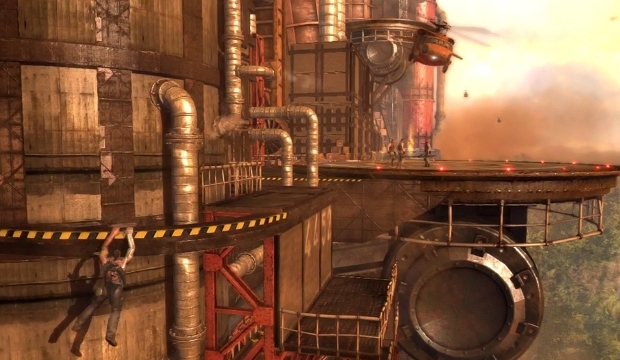
VERDICT: Marlow Briggs is one of those games that was apparently designed with a very clear goal. It’s highly unlikely that anyone, at any point during its development, thought they might have a blockbuster super-hit on their hands and, as a result, it comes down from its OTT action-movie high just on the right side of enjoyable.
Stuffed full of big explosions, frantic combat and wilful bombast, Marlow Briggs and the Mask of Death is a surprisingly enjoyable action-adventure that remains just about competent enough throughout to justify the fun it has at the expense of its own genre. If you don’t go in expecting to be blown away, you won’t be disappointed with Zootfly’s over-the-top jungle jaunt.

GOOD. A game that scores 7/10 is worthy of note, but unworthy of fanfare. It does many things well, but only a few of them incredibly well and, despite a handful of good qualities, fresh ideas and solid mechanics, it fails to overwhelm.


